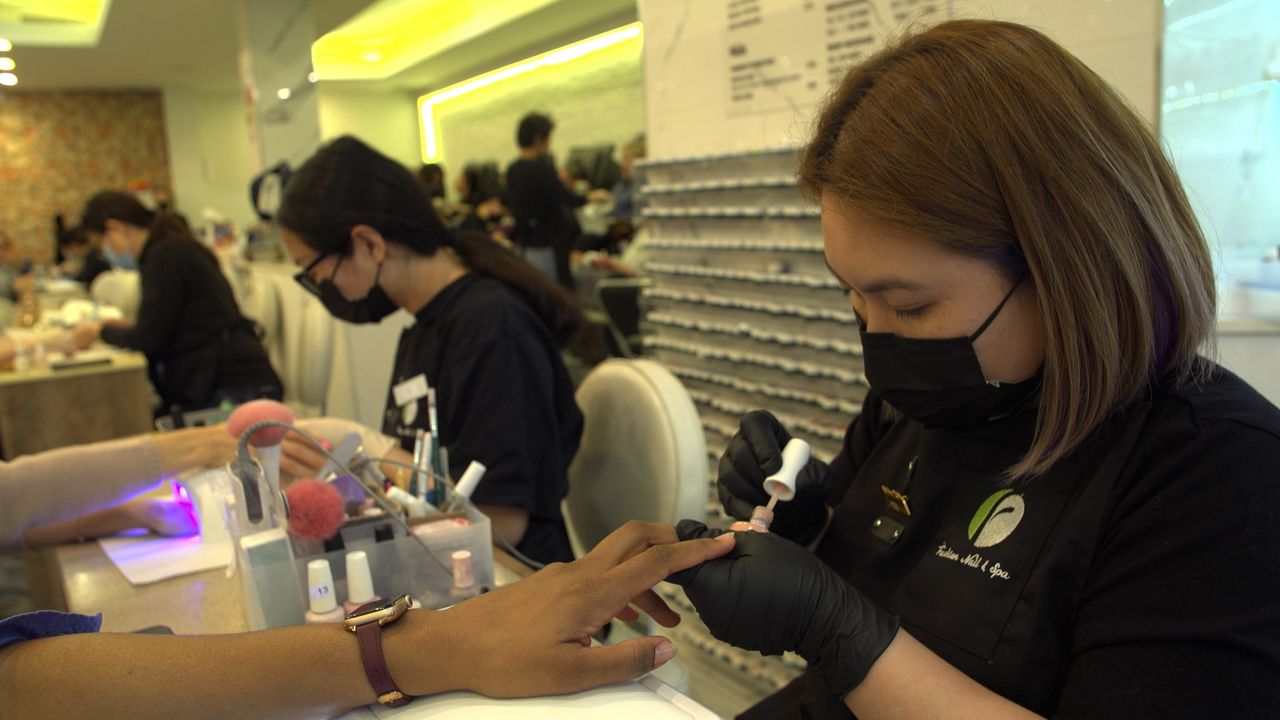While more and more people are leaning into self-care, a group of public health researchers are hoping to help workers who provide self-care do the same by making their workplaces safer.
National Health Reporter Erin Billups takes a look at an effort underway to educate nail salon employees and how clients can help.
If you’ve ever gotten a manicure or pedicure at a nail salon, you probably noticed the strong scent of polish and remover. We spoke with Dr. Aurora Le, a health behavior scientist and occupational safety expert at Texas A & M University.
“There is formaldehyde in a lot of nail products, which funeral homes use as embalming fluid. And we know that is a known cancer-causing chemical,” said Le. “Toluene is another one. There's a lot of ammonia, acetone, which is used in a lot of polish removers as well.”
Le and colleagues at the University of Michigan’s Healthy Nail Salon Cooperative created an online safety training course for nail technicians. The hope Le said, is to give them tools to better protect themselves. Small businesses like nail salons often fall through the regulatory oversight cracks.
.MXF.00_02_42_03)
“Usually businesses with ten or fewer employees, they don't have as stringent of annual reporting requirements for injuries and illness to OSHA as larger industries do,” said Le.
The chemicals and fragrances used in polish and removers are also not heavily regulated by the FDA. Small studies have found regular contact with these chemicals has an impact.
“All of these chemicals and volatile organic compounds have, obviously, short term or acute health effects, like your respiratory irritation and asthma breathing issues,” said Le. “But over time, chronically, it can cause more like lung obstruction. Things of that nature and the known cancer-causing chemicals have been noted in some case studies to have caused cancer in some nail salon workers.”
The training is offered in English and Vietnamese. With nail work being one of the fastest growing occupations, Le and colleagues are hoping to expand the languages offered. The cooperative’s primary source of funding has been through NIOSH and National Institute of Health grants. Le said it may be some time until they are able to provide training in more languages with recent government spending cuts.

We took a trip to a nail salon in Manhattan that follows more stringent New York City regulations for newer salons, aimed at reducing workers’ chemical exposures. An easy first step, Le says, is for nail techs to wear masks during nail filings and gloves during polish removals. The training also touches on proper hygiene, like how to spot fungus and infections, and what techs should and shouldn’t agree to do.
“We have heard that from nail salon workers that we've talked to you, oftentimes people do kind of treat them like podiatrists. And that is not their scope of work. So if they do have some kind of like a bunion or a giant callus or a concerning foot situation, that is not for the pedicurist to try to address,” said Le. “They definitely should be seeking a medical professional to address that.”
Good ventilation is also key; in some states, salons are required to use local exhaust ventilation systems that capture harmful filing dust from both the nail tech and clients.
Still, Le said, much of the focus for nail salon safety is often centered on the client, such as concern over UV exposure during gel manicures. “On the consumer side, where they're like, hey, you probably don't want to stick your hand in a UVC curing set for more than maybe once a month, because any direct UV exposure causes your strands of DNA to break down and can make it more susceptible to skin cancer,” said Le.
The smaller curing lamps also help limit technician UV exposure, whereas larger ones that offer curing for several pairs of hands at once could throw off harmful rays affecting those who work near them day in and day out.
Customers can also play a part in making salons safer. That’s what happened in California, where occupational safety standards are among the highest in the country.
“These are these people's livelihood. So we want people to still get their nails done and feel good about themselves,” said Le. She said customers using their voices and wallets to ask for change has been a powerful force.
One thing customers can do is request that the salon try and use products free of the so-called “toxic trio” of chemicals; which are toluene, formaldehyde, and dibutyl phthalate.
Also, with small profit margins, most salons that are not required to have high powered ventilation systems won’t install them. It may be up to the customers to request the salon install better ventilation, and, Le said, be willing to accept slightly higher prices to help offset the expense.
Customers can also ask for simple changes like more disposable items, like pedicure tub liners, gloves, disposable files, and masks.






